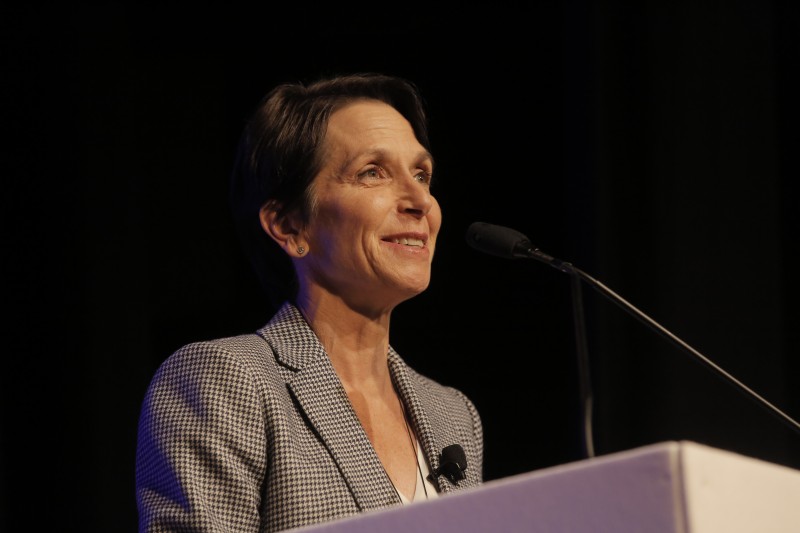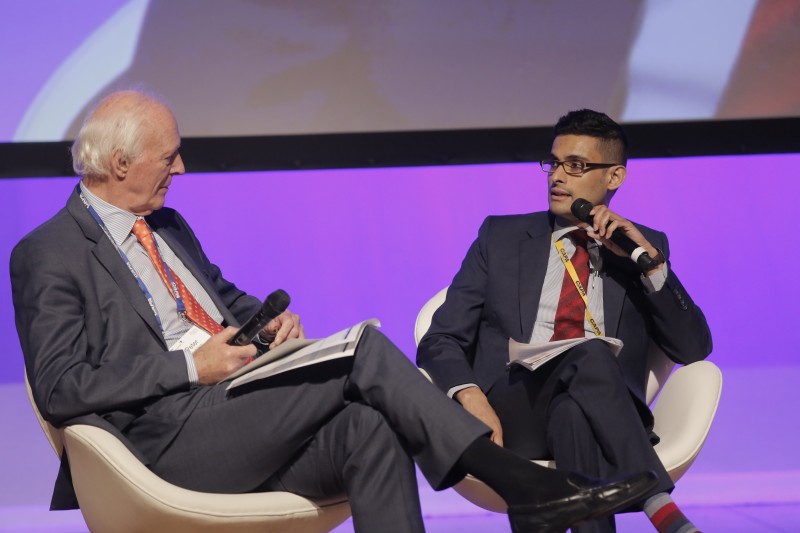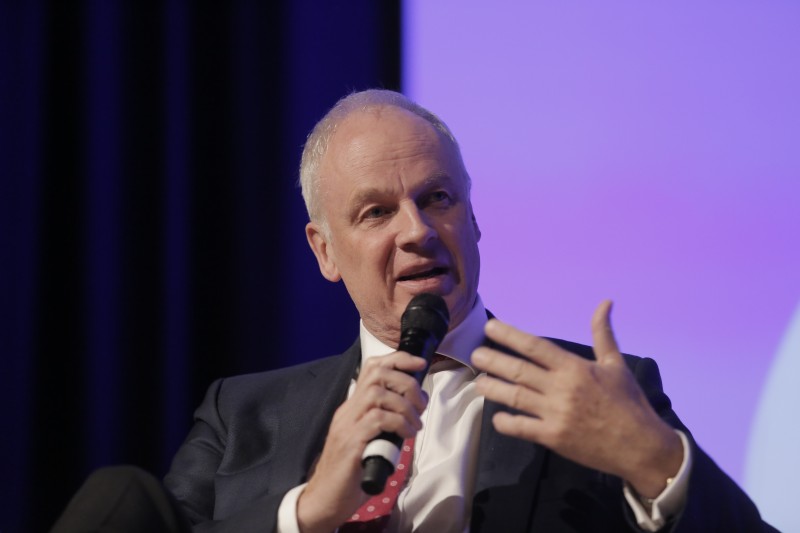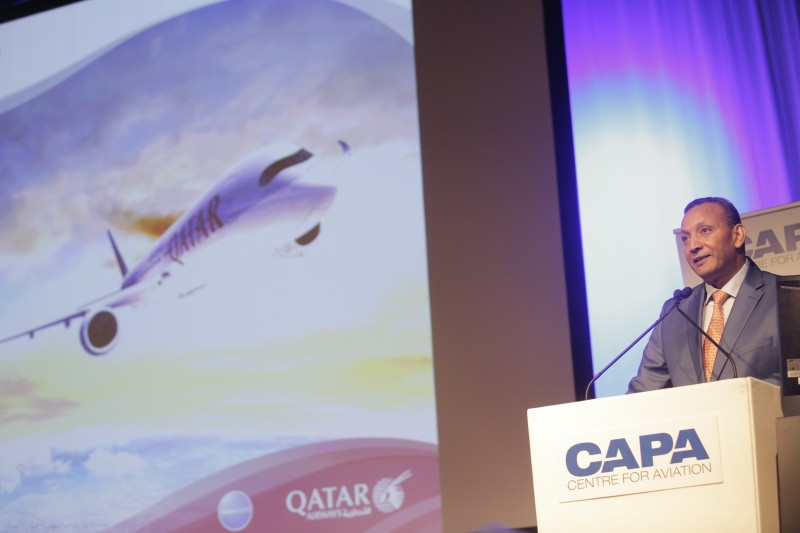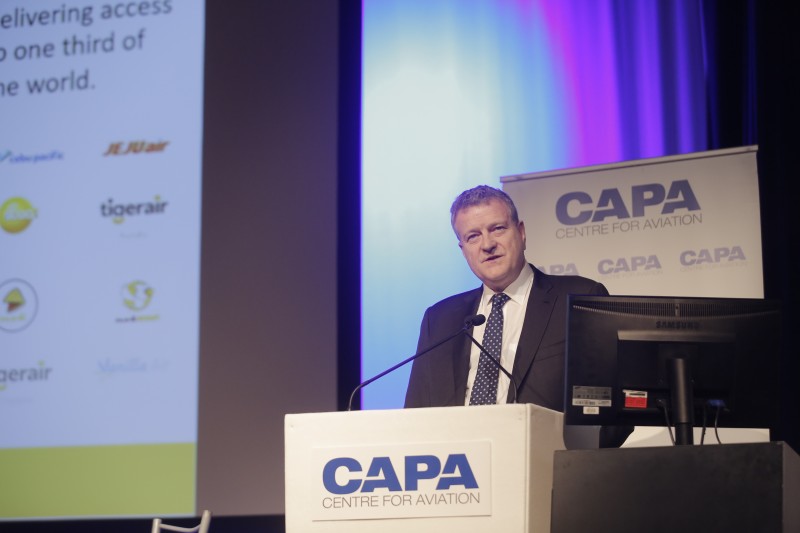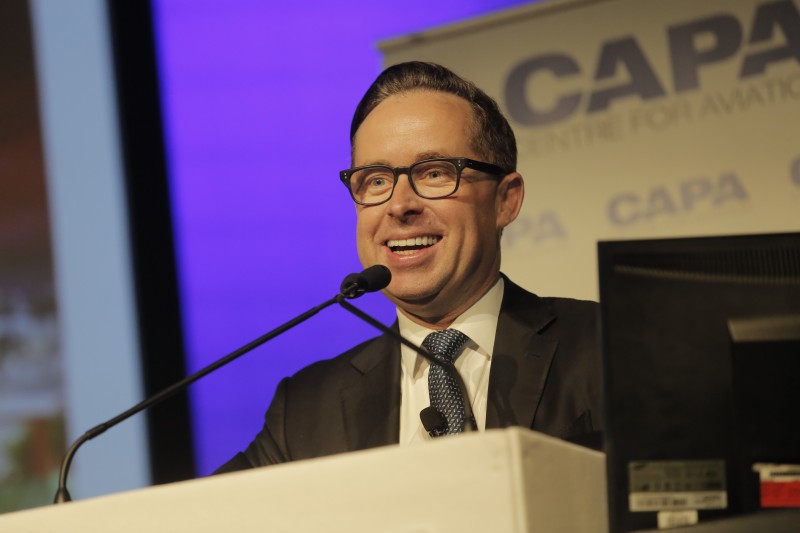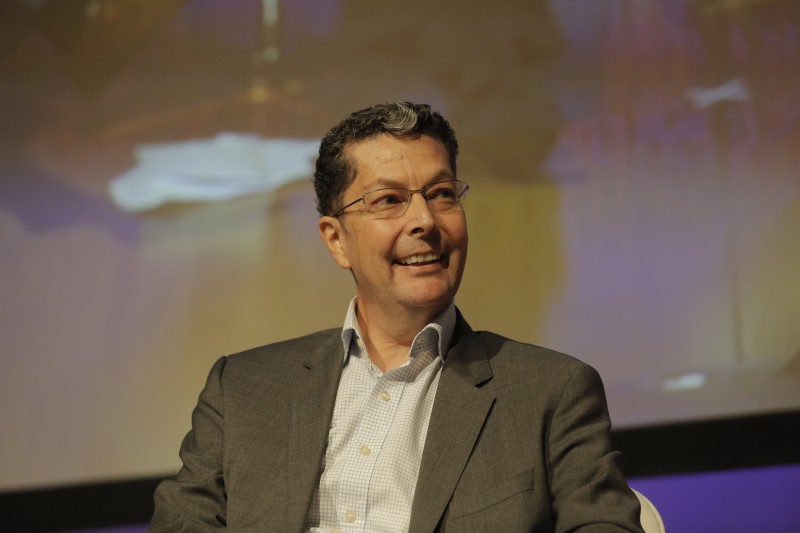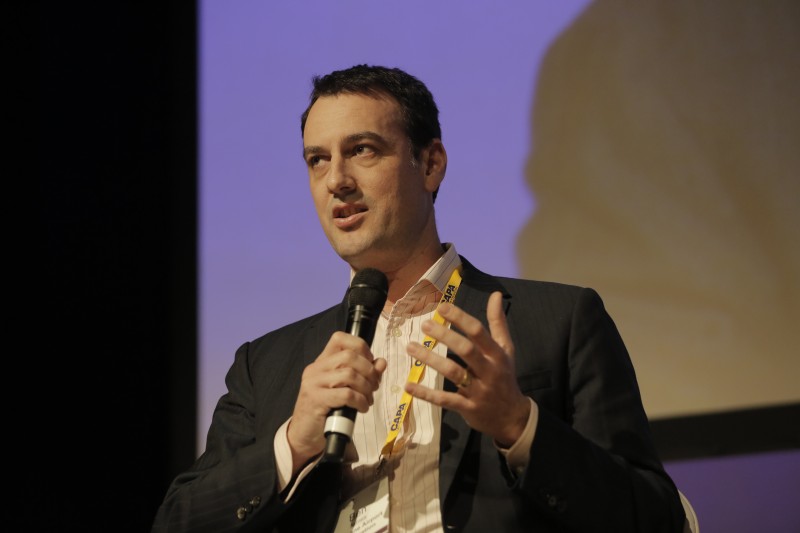CAPA Australia Pacific Aviation Summit highlights opportunities in Australia’s international market
A common theme in the CAPA Australia Pacific Aviation Summit 2016 in Brisbane on 4 and 5-Aug-2016 was opportunities in Australia's international market. Australia is experiencing rapid inbound and outbound growth, opening up opportunities for airports, local airlines and foreign airlines.
Australia-China in particular is a market in the spotlight following 22% growth in inbound visitors from China in 2015. However, there are also opportunities to develop new routes to other Asian countries and the more mature markets in Europe and North America, driven partially by new aircraft technology.
The Summit attracted over 40 airlines and 40 airports. Jetstar Group CEO Jayne Hrdlicka and Qantas Group CEO Alan Joyce opened both days of the summit with stimulating keynote addresses to over 400 delegates.
Jetstar seeks further expansion in Australia-China market
In an engaging Q&A following her 4-Aug-2016 keynote address Ms Hrdlicka said that Jetstar Airways has "a great cost position", and is the "perfect vehicle" to operate services into regional cities in China and drive them to "big leisure destinations in Australia". She added that the Gold Coast-Wuhan route, which was launched just under a year ago, "is the first of a few opportunities and like many industries in Australia, thinking about China and Chinese customers is really important because it's an opportunity of some magnitude".
The rapid growth of the Chinese market, however, has some ramifications when it comes to pilot recruitment and retention. "China is growing at such a fast rate their requirement for pilots is enormous, and they're behind in developing their own pipeline and that's creating tension in the region," Ms Hrdlicka said.
Jetstar is pursuing growth across Asia Pacific through its portfolio of subsidiaries and joint ventures. The group is not limited to tapping the opportunities in the Chinese market from Australia as it also serves China from Singapore and Vietnam. Ms Hrdlicka said that the group is now "larger than Singapore Airlines, larger than Malaysia Airlines and just a tiny bit smaller than Cathay Pacific in terms of aircraft".
"We're not satisfied with where we sit today," she added. "We do believe our role is one of setting the standard in low fares aviation, we're a disruptor at our heart."
To grow requires maintaining a focus on low costs and innovation. If Jetstar is "not the lowest cost, we can't keep our market position", Ms Hrdlicka explained. "One of the reoccurring themes in our history has been a willingness to challenge not only aviation norms but also LCC norms."
Partnerships will also continue to be an important component of the Jetstar strategy, both in Australia and in its overseas markets. The group now interlines or codeshares with more than 40 full service airlines around the world. "It's not an obvious thing for an LCC to do, but it's a pretty interesting way to think about it because all of our FSC are carrying passengers who decided to fly on them because they were the lowest fare of the day. … We provide network reach into leisure destinations that they're not able to do."
Qantas also pursues opportunities in China
Qantas Group CEO international and freight Gareth Evans, speaking on a panel on the Australia international aviation outlook, also cited the opportunities for the full service airline in the international market. He said there is "huge growth from China and there's going to continue to be huge growth".
Mr Evans said Qantas' new joint venture with China Eastern Airlines is not yet as big as Emirates Airline or American Airlines, "but it's going to be a major, major part".
In addition to looking at potential new routes to China, Qantas is relying on multiple partners to tap the opportunities in China. "An airline like Qantas needs to have key partners and in China we have three. Cathay Pacific through Hong Kong, an enormously important gateway into China; we have a blocked space codeshare with China Southern; and then this relationship with China Eastern," Mr Evans said.
Mr Evans added that Qantas is "always looking for opportunity" from a network point of view. "For us, the next big change happens when the 787 arrives, the first of which arrives in Oct-2017. We haven't finalised where we'll fly those aircraft yet - we'll do that over the next few months - and that gives us a chance to make changes to our network," he said.
Qantas has been able to serve Asia more effectively and more profitability since completing its international restructuring. "Today we serve seven major markets in Asia with a great product both onboard and on the ground, and then partnered beyond those gateways with different airlines in different markets." Mr Evans referred to Qantas' partnership with Emirates as "a transformational moment because prior to Emirates there was an element of flying through Asia to get to Europe, so by decoupling that we're absolutely laser focused on our Asian network with the right times, the right aircraft and the right product and that's paying dividends in serving that market."
AirAsia X plans expansion in Australia
Also speaking on the Australia international aviation outlook panel, AirAsia X head of commercial Arik De said that China is one of its core source markets for Australia. AirAsia X's Australia traffic now consists of more inbound passengers than outbound, due to rapid growth from China, India, Indonesia and Vietnam.
"People in places like Delhi and Ho Chi Minh City see Australia and New Zealand as aspirational so we see great appetite," Mr De said. "There's people growing up with an aspiration to see Australia, and that's exciting for us."
Mr De said that AirAsia X plans to pursue further expansion in Australia, including launching service to Brisbane Airport. Mr De explained: "Brisbane is a cornerstone of our plans," he said. "It's on the list."
He added that the LCC "would love to get more" capacity into Australia but is now fully utilising its entitlements. "The demand is there," Mr De said.
International Air Services Commission (IASC) chair Ian Douglas also participated on the international aviation outlook panel and said that the view of the IASC is to "say yes, unless we have a reason to say no". Mr Douglas explained that if an airlines comes to the IASC and says it wants to access this market, then their view is that competition is good, and it should be permitted to enter.
Hong Kong Airlines is keen to expand in Australia
Hong Kong Airlines assistant director commercial Michael Burke, speaking on a panel on Australia and New Zealand as a destination, also said that the airline is keen to add capacity to Australia if it can secure the entitlements. Hong Kong Airlines is now limited to serving Cairns and the Gold Coast as they are no available traffic rights from Hong Kong to Australia's four main gateways.
Mr Burke said Hong Kong Airlines has enjoyed considerable support for its Australia services since they were launched in 2015. He said there has been strong support from local and state tourism authorities, which is "fantastic".
Mr Burke added that Tourism New Zealand had not provided as much support for the airline's new Auckland service, which was launched in May-2016. He said that it appeared that tourism in New Zealand was "full" and not seeking additional inbound tourists, especially at peak periods. He summarised by saying that it had been "two very different experiences" (in dealing with the respective organisations).
Passengers from mainland China account for a majority of Hong Kong Airlines' traffic to Australia and New Zealand. Mr Burke said that there are 90 cities of over one million people in China, showing the potential in the market.
Speaking on an earlier panel on technology, Mr Burke said China is a "massive country" and can be seen as 15 different regional markets rather than a homogeneous market. He said airlines need to "look at each market in its own right" and adjust the product accordingly.
Also speaking on the technology panel, Nok Air CEO Patee Sarasin said he understands that there are numerous and fundamentally different markets within China. He said "each city is like a country". He noted the popularity of Thailand for Chinese visitors, describing Thailand as "Travelling 101" for the Chinese, and noting that the carrier's existing charter services to China were doing "really well". He said that Nok looks at each town and city as a single market, with a product designed specifically around this.
China market has huge potential, but visa issue needs to be resolved
World Travel & Tourism Council (WTTC) president David Scowsill, speaking on the panel on Australia and New Zealand as a destination, said that the numbers from China were "enormous". He said the Chinese Government is promoting tourism with 4.7 billion domestic trips in China and outbound travel will "keep growing" amid a growing middle class in China.
Mr Scowsill said Australia needs to question where Australia wants to direct tourism travel from China, and how to manage the potential scale of this. He also noted that Chinese visitors are travelling "more and more" as independent travellers, especially the younger travel market. He also noted that bringing tourists into the cultural environment is key to developing the tourism product.
Tourism Australia MD John O'Sullivan, speaking on the same panel, said the current more independent Chinese consumers are interested in surfing lessons, rather than the expected more passive beach experience of the past.
Mr O'Sullivan also said the Australia Government plans to introduce a 10-year visa for Chinese nationals by the end of 2016. Tourism Australia is also working on online applications at present.
Mr Scowsill said reciprocal visa issues will need to be resolved for Australia to become a more attractive tourism proposition.
China growth is key, as other source markets for Australia have dropped. Mr Scowsill said inbound travel from Japan to Korea has been "totally destroyed" in the past two years due to currency developments.
Qatar Airways is also seeking more traffic rights to Australia.
Qatar launched services to Adelaide and Sydney in 1H2016 and also serves Melbourne and Perth. In a keynote address Qatar Airways senior VP aeropolitical and corporate affairs Fathi Atti said the airline will also launch to Brisbane if it can secure the traffic rights.
"One of the reasons why I'm here [in Brisbane] is my airline wants to be here and we will. That's a promise", he said.
Mr Atti said Qatar's future in Australia is "fully dependent on how much we can grow here according to the bilateral." He added that the only place Qatar Airways is not growing globally is Australia, "but not by lack of desire".
Mr Atti claimed that calculations by the Australian Government showing 0% growth from Qatar were not correct. "We grow to every single state, to every single country, we're growing everywhere and such a big tourism country as Australia cannot be forecasting our growth as 0% - something is wrong in the calculation", he said.
Qatar is also seeking rights to operate cargo flights to Australia. Mr Atti pointed out that Qatar has become the third largest cargo airline in the world but does not yet operate a single freight frequency to Australia. "We will get rights to cargo", he predicted.
Mr Atti stated that connectivity between Qatar and Australia is essential, citing Qatar's dependence on Australia for Halal beef. "This is an important message for all the decision makers [in Australia]; don't block more of our investment, more of our interest - not only of bringing passengers, but bringing passengers and freight and meat and clothes…The whole economic cycle is dependent on passenger and cargo frequency."
Tigerair Australia cuts its teeth on international services
Virgin Australia LCC subsidiary Tigerair Australia's CEO Rob Sharp also gave a keynote speech on 4-Aug-2016. The LCC is keen to pursue growth in the international market following the successful launch of services to Bali in Mar-2016, he indicated.
Mr Sharp said the new operations to Indonesia were "very aligned with our brand" and were "meeting our expectations." Mr Sharp added: "We're confident that it's going to be a very good route for us given the nature of the travel segment".
Mr Sharp said that the planned transition from a fleet of A320s to Boeing 737-800s would take about three years and result in lower costs, group synergies with parent Virgin Australia, and performance advantages. Tigerair Australia now operates 14 A320s in the domestic market and has three 737-800s that are used on the Bali routes, but are wet-leased from Virgin Australia. Mr Sharp said regulatory work is "well advanced" in bringing Tigerair Australia's three Boeing 737-800s onto its own AOC.
Mr Sharp said the airline would continue to operate as a separate business from Virgin Australia. "We do leverage the scale and support", he said. "[But] we'll continue with the different branding so what that means is there is no codeshare, no interlining, no FFP."
Mr Sharp said the perception of the carrier had improved significantly since late 2014, including a 20% improvement in satisfaction. Mr Sharp added: "Pleasingly, they're recommending us - there's a lot of word of mouth recommendations occurring about Tigerair … Customers are seeing a changed organisation".
He said that one of the most obvious areas of improvement for the carrier had been around on-time performance. Mr Sharp noted: "Even at the budget end of the market, getting people where they need to go is critical… Since the beginning of 2015 Tiger has been recognised as Australia's most on time carrier".
Qantas ready to expand international network with 787-9s
Qantas Group CEO Alan Joyce was the opening keynote speaker on the second day of the summit. In a Q&A session with CNN's Richard Quest following the speech Mr Joyce discussed a wide range of topics including international expansion, the group's fleet plan and partnerships.
As Mr Evans had highlighted the prior day, international expansion is planned for late 2017 following the delivery of Qantas' first batch of 787-9s. Mr Joyce provided more detail, stating that there are "three potential networks" Qantas is now working through for its incoming Boeing 787-9 fleet.
"We're talking to the airports and the states to make them successful," he said. "There's lots of alternatives about where we can deploy those aircraft, so we're working through that and by the end of this calendar year we'll be making an announcement about the route network for the 787s."
Mr Joyce said infrastructure support from airports "is going to be critical" in the decision where to base the 787-9 fleet. Perth, Brisbane, Melbourne and Sydney are all under consideration.
In Perth, the aircraft would be used to launch nonstop flights to London. "There's opportunities to grow from Brisbane to the US," Mr Joyce noted. "There's potential out of Melbourne [with] the aircraft being able to fly from Melbourne to Dallas or add frequency from Melbourne to LA. Out of Sydney the aircraft could fly to places like Chicago."
Qantas has no plans to take additional A380s
Mr Joyce said Qantas is "continually pushing" out the orders for its remaining eight A380s on order. "Our intention is that we're not taking those aircraft… We have 12 aircraft and the 12 aircraft we have are fantastic", he said. "We believe there's a network for 12, that's very good and works very well. We struggle with the network for the next eight and that's why we keep pushing them out."
He added that the airline plans to continue operating its Boeing 747-400ER fleet "for some time. There's no immediate need for us to make a decision on an aircraft replacement".
Qantas expects that eventually new technology will enable ETOPS routes, enabling the use of future twin-engine aircraft to take over routes such as Sydney-Johannesburg. Johannesburg is currently served with the 747.
Qantas partnership strategy focuses on JVs
Mr Joyce said that JVs are more important to the carrier than global alliances "because they do generate a very significant return on performance on our network." He added: "I think that the rest of the alliance is important, not on the same level as JVs, but is important because our customers want that range [of destinations]".
But Mr Joyce said that oneworld remains very important to Qantas. "oneworld is great for our customers and there's a lot of our customers that love the recognition, the access to lounges, the earn of frequent flyer points that oneworld gives them," he said.
"One of the great things about oneworld that's different from Star Alliance and SkyTeam is that we can do relationships outside of it, and we've always done that, we've got great relationships with Emirates, great relationships with the Chinese carriers."
Asia is an important growth market for Qantas
Mr Joyce said that growth opportunities in the Asia Pacific "always amaze me … In 2009 the Asia Pacific became the largest aviation market in the world. The view is that by 2025, 20 of the world's richest 50 cities will be based here in Asia."
He noted that 35% of all consumer spending will come from China and India by 2030, with the Asia Pacific aviation market being bigger than Europe and North America combined by 2035. Mr Joyce added: "There's massive, massive opportunities in the region".
Mr Joyce said that while the rise of Asia "is very important for us, it doesn't mean other markets are irrelevant". Mr Joyce noted that Qantas is "bigger in North America than we've ever been"; that with the Emirates partnership it had "quadrupled the amount of traffic" it books to and from Europe.
Australia to be served by several new Chinese airlines
Speaking on a panel following Mr Joyce's keynote on de-risking new international air services, Aviation and Tourism Marketing specialist Peter Hoslin referred to CAPA research that indicated 17 Chinese carriers will be operating long haul by end of this decade. He noted that secondary Chinese airlines are now operating into Australia and there is a "whole range of others coming".
Mr Hoslin noted the "massive" catchment area behind these secondary Chinese airlines and their hubs, and believes that they are "sustainable routes". He also noted that Australian airports need to look at these markets differently in terms of retaining them and helping them grow. Mr Hoslin also stressed that Australian airports need to recognise that China is largely a one-way market.
Mr Hoslin stated that Australia is in a position to be able to "take advantage of incredible outbound flow of Chinese who are developing into global travellers." He described the Chinese travel market as an "insatiable" travel market, adding that Australia is at the beginning of the China travel boom, which Mr Hoslin expects will continue as "far and as much as Australia wants and can cope with". He also noted that there is an "amazing pool of travellers" from China with potential for high spend, and that Tourism Australia has a good approach to targetting the high-value China market.
Australia to experience rapid international growth
Speaking on the same panel, Brisbane Airport aviation business development manager Ben James said that Chinese airlines, along with other new entrants, need help to launch and market new operations in Australia. These airlines need to figure out "Who are these Australians?" and the intricacies of Australian customers.
In order to achieve this airports needed to step up and provide more assistance to incoming airlines in identifying who the local consumers are. Mr James explained that airports can provide carriers a "local pair of eyes, hands" in the market to ensure the right message is put in front of the right people at the right time.
OAG business development director Asia Pacific Mark Clarkson stated that he believes "fantastic growth" is yet to come in the Australia market, with a key consideration and issue being the need to handle this growth in a sustainable manner. Mr Clarkson stated that "stellar growth" is underpinning capacity discussions in Australia, with a key part of this discussion being the sustainable handling of growth in the future.
Mr Clarkson noted that air service agreements are an "incredibly important" factor in looking at international air service growth and opportunities.
Virgin Australia profitability could be a concern
In the closing session Bell Potter senior analyst John O'Shea said international investors are "very keen in investing in the travel and tourism sector," particularly in Australia. Mr O'Shea noted: "Opportunities in Australian tourism and travel sector are huge," adding that the investment community is looking for sectors that are growing: "The attractiveness of the Australian Airline sector being a duopoly is also likely to attract interest from International Airlines wanting to play in Australia."
Mr O'Shea said that Virgin Australia's FY2016 performance "was not necessarily a great surprise, but highlights the fact that they're generating negative free cash flow." He noted: "They're trying to address some of the concerns the market has with them … Where Virgin's [debt level] has got to is at the high end in terms of comfort level, and certainly from the Australian market perspective it was considered very high, and hence the need to do the recent raising. But it still remains quite high".
"The results indicate that, in a general sense, the challenge Virgin is facing is that it has traditionally generated - in recent years - negative free cash flow. If you consistently generate negative free cash flow, you need to borrow from a bank or raise equity from shareholders."
